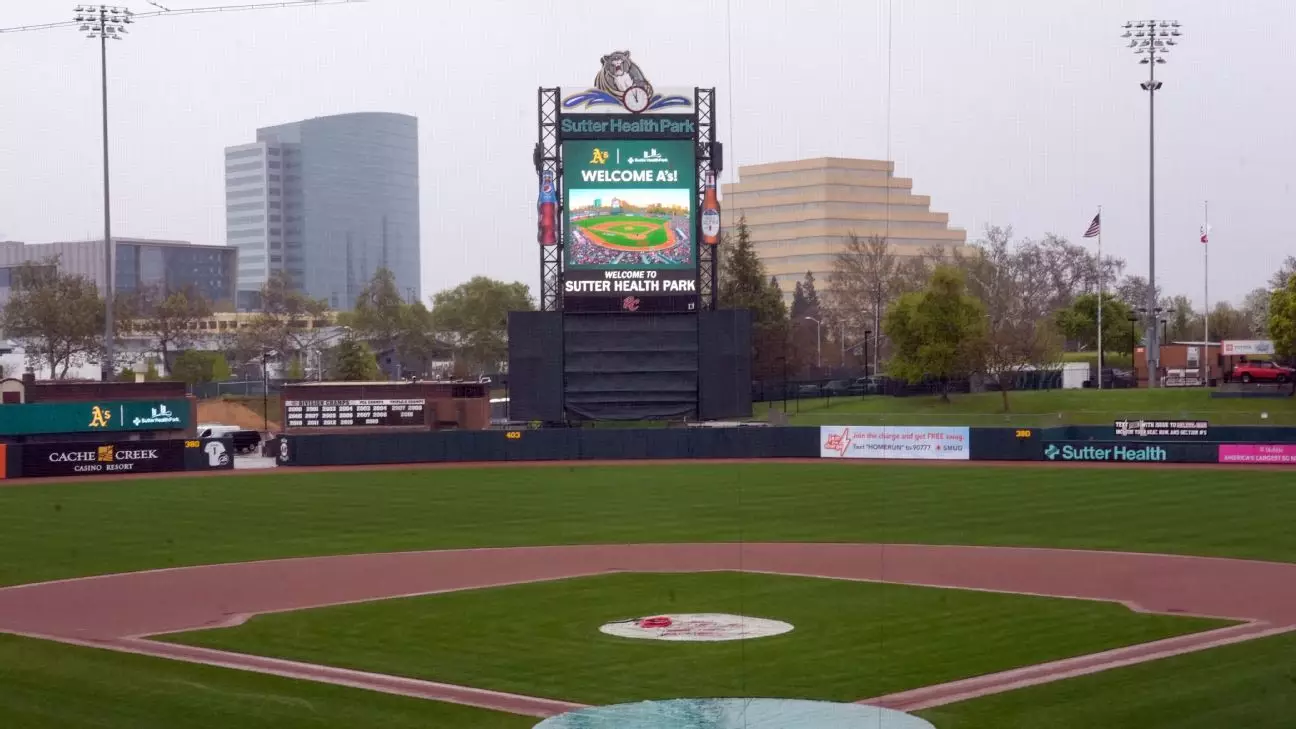The dynamic landscape of professional sports is often defined by its challenges, and few scenarios exemplify this better than the coexistence of the San Francisco Giants and the A’s at Sutter Health Park. As the Giants’ Triple-A affiliate, the Sacramento River Cats, prepare for their ongoing season, the task of maintaining a pristine playing surface now rests intricately on shared resources and innovative turf management strategies. This unprecedented partnership between a major league team and a minor league affiliate creates a compelling narrative of collaboration that has not only drawn the attention of sports enthusiasts but has also underscored the complexities involved in managing athletic fields.
At the heart of this ambitious endeavor is Murray Cook, Major League Baseball’s field consultant and the driving force behind BrightView Sports Turf. His perspective on the matter reveals a forward-thinking approach that acknowledges the unique demands of maintaining sod for two competitive teams. The deployment of an expanded grounds crew is a testament to the commitment required to uphold the integrity of the playing surface. Cook acknowledges the unconventional nature of this arrangement, illustrating the necessity for contingency planning in a realm where weather, wear, and logistics dictate the conditions of play.
Navigating the Turf Transition
With the A’s set to inaugurate their new season in Sacramento, the strategic decision to utilize natural grass rather than the initially proposed artificial turf serves multiple purposes. In a climate characterized by sweltering heat, natural grass emerges as the ideal solution; not just for aesthetic appeal but for player comfort and safety. Cook aptly comments on the universal preference among players for grass surfaces, emphasizing that comfort often translates directly into performance. This belief, not grounded merely in tradition but rather in comprehensive understanding, pushes the narrative towards the revival of natural grass at Sutter Health Park.
While the endorsement of natural grass has its benefits, it also presents challenges, notably in dealing with areas that experience high foot traffic, such as around the pitcher’s mound and home plate. The expectation that these critical zones will require ongoing maintenance highlights the importance of proactive turf management. Cook’s foresight in recognizing potential wear and tear is an essential aspect of sustaining the grass quality throughout the season, an area where technological advancements play a key role.
Technology as a Game Changer
In a bid to maintain optimal field conditions, modern technology will serve as a backbone in the upkeep strategy. The incorporation of drones and on-field sensors represents a significant evolution in field management, facilitating real-time monitoring of turf health and soil vitality. Such advancements enable groundskeepers to take corrective action before issues escalate, truly redefining the standards for field maintenance. The integration of these technologies not only smoothes the management process but also heralds a shift towards data-driven decision-making in sports arena management.
Additionally, the infrastructure at Sutter Health Park boasts a state-of-the-art watering system strategically installed under the infield clay. This feature is designed to support not only hydration of the playing surface but also to enhance root health, showcasing a commitment to creating an environment conducive to high-quality performance. The innovative cooling system, with its ability to channel cool air through the soil, further emphasizes the marrying of tradition and technology in pursuit of the ideal playing conditions.
Ultimately, the multi-layered approach being implemented at Sutter Health Park symbolizes a broader commentary on the evolution of sports field management. By leveraging both innovative technology and expert craftsmanship, the Giants, A’s, and River Cats are setting a precedent for how teams can collaborate effectively, underscoring the need for strategic, rather than reactive, management of shared playing environments.

